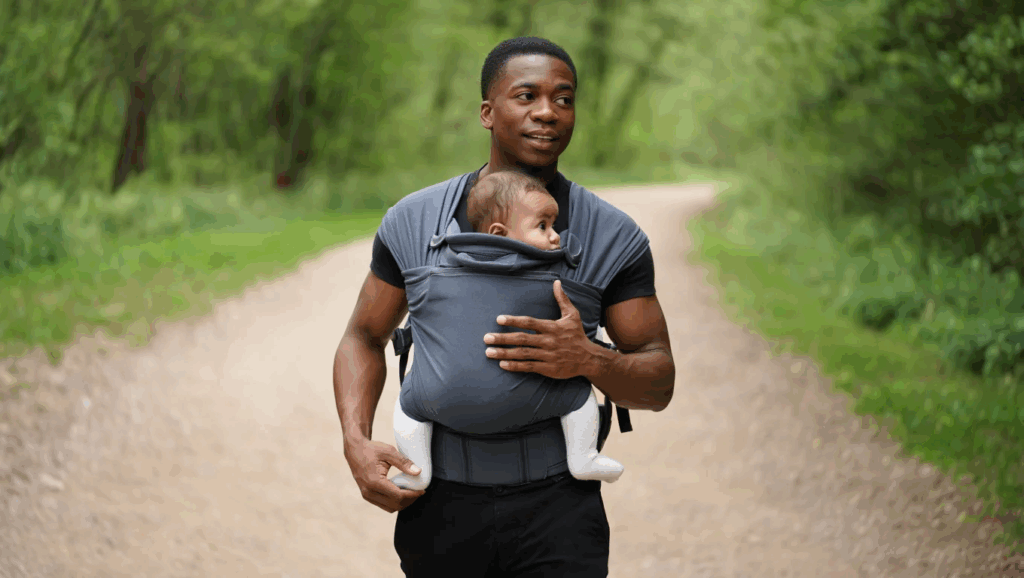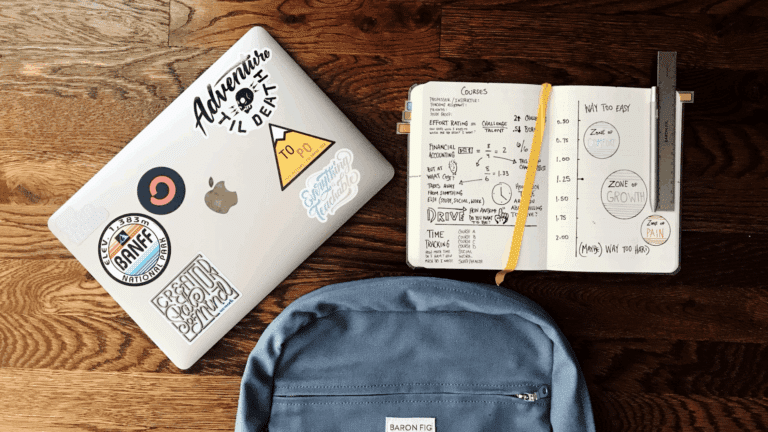Parents often struggle with a tough choice: keep their baby close or have their hands free. Baby carriers solve this problem.
These helpful tools let parents hold their little ones while still getting things done around the house or when out and about.
The right carrier can make daily life much easier. It keeps babies happy with snuggles while letting parents move freely.
This guide breaks down the main types of baby carriers with their good and not-so-good points. By the end, you’ll know which one fits your family’s needs best.
Main Types of Baby Carriers Explained Simply
Parents today can choose from several types of baby carriers that suit different needs and lifestyles. Every kind of baby carrier has its own set of benefits and works best for specific ages and situations.
The following breakdown helps parents understand which carrier might work best for their family.
Soft-Structured Carriers
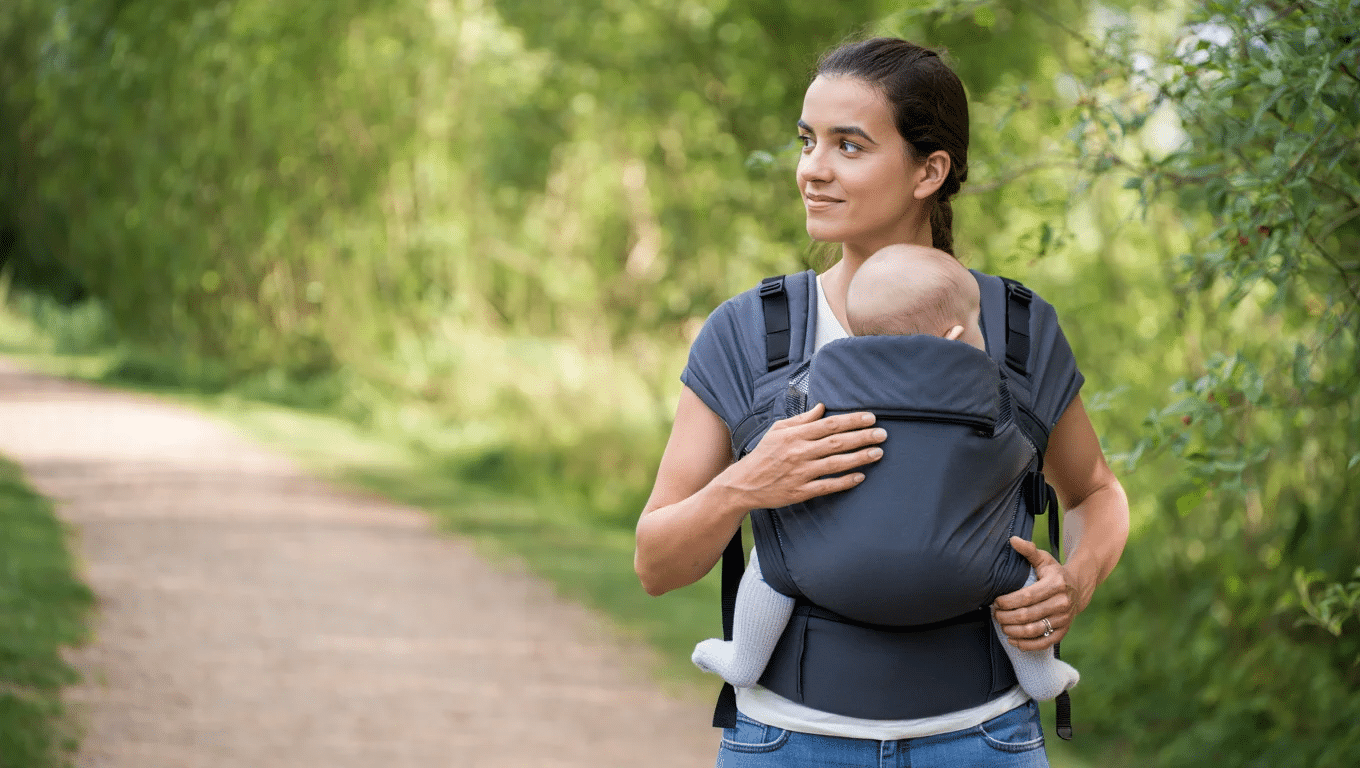
Soft-structured carriers look like backpacks, but for babies. They have padded straps and a solid frame that makes them easy to use.
Ideal for: Babies from 7.5 to 33 pounds
Best use: Daily tasks at home or short trips where you need both hands free
These carriers work well for parents who want something they can put on quickly. They offer good back support and can be worn on the front or back, based on the baby’s age.
Backpack Carriers
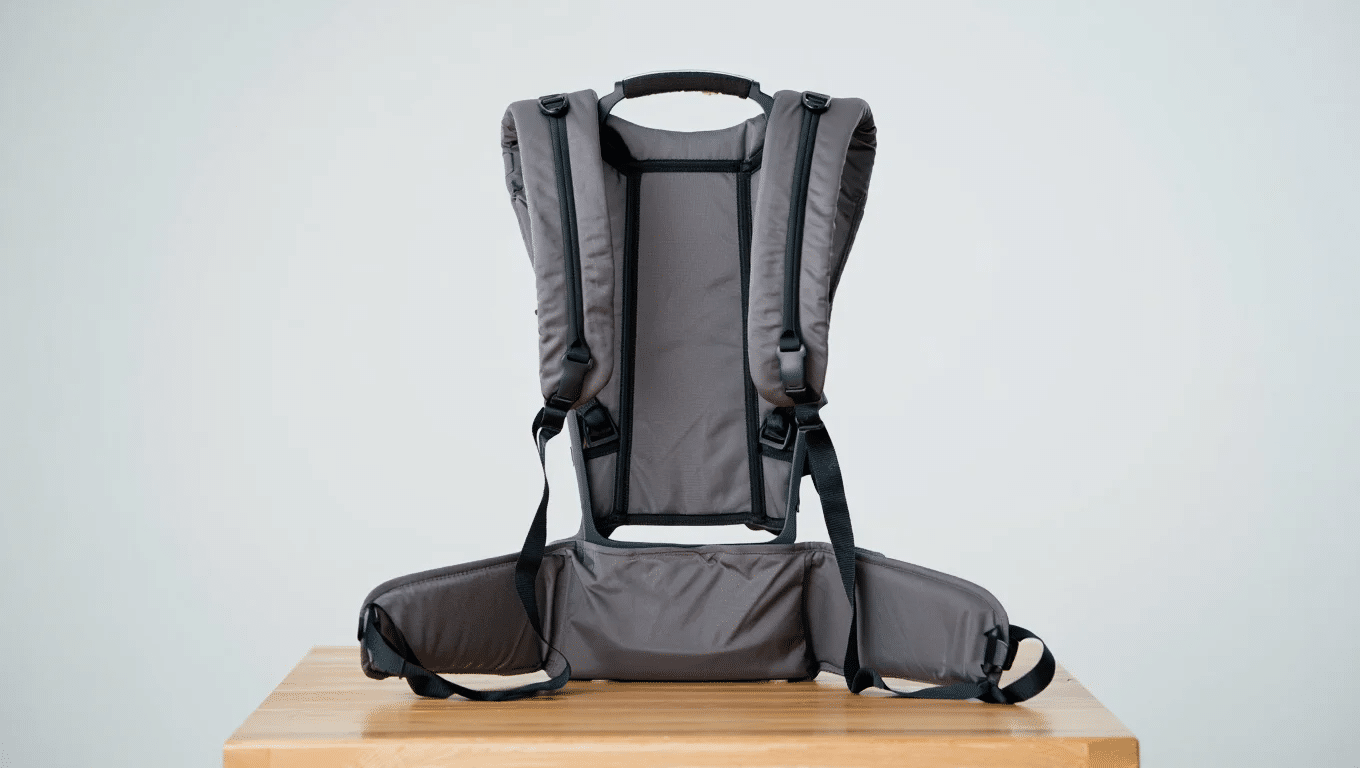
Backpack carriers have rigid frames that sit on the parent’s back. They often include storage space.
Ideal for: Babies from 6 to 36 months
Best use: Hikes, outdoor trips, and long walks
These carriers excel for active parents who enjoy the outdoors. They keep babies high and let them see the world, but add weight to the parent.
Wrap Carriers
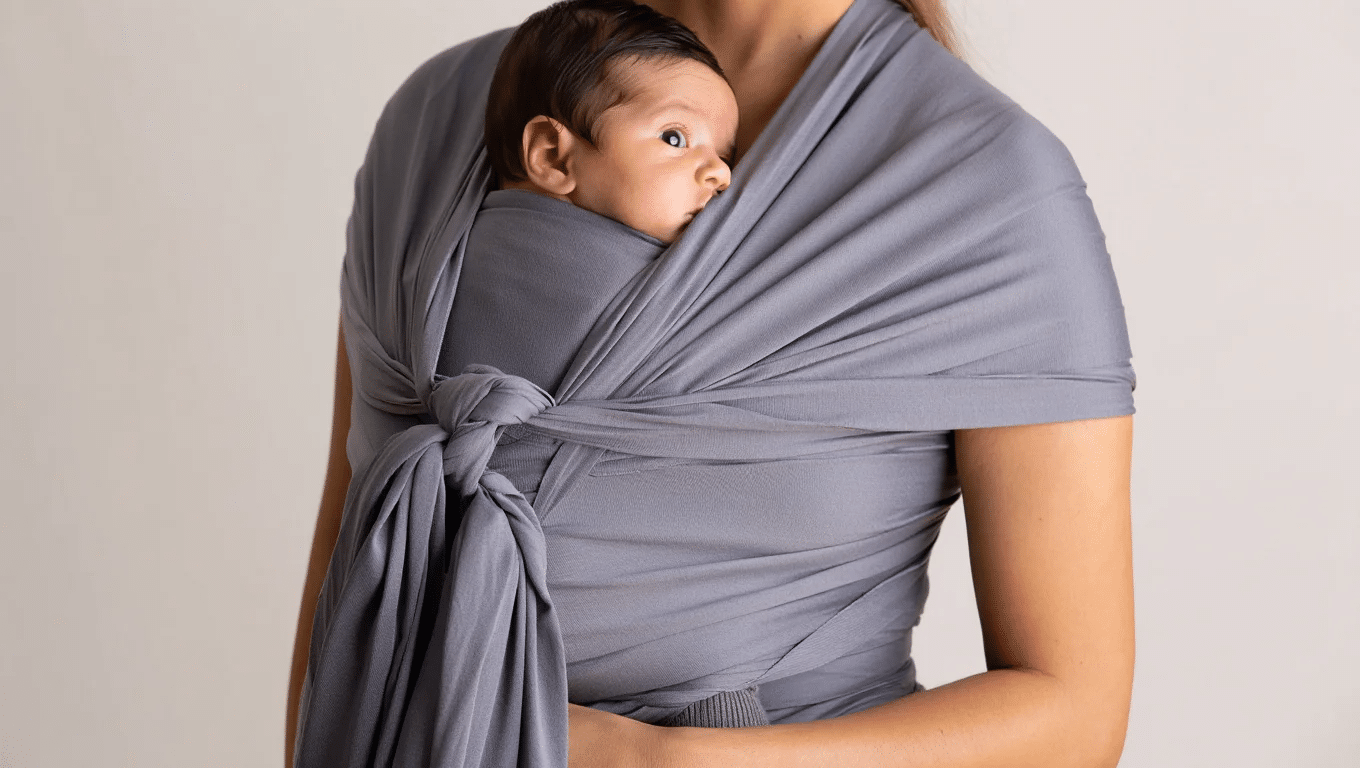
Wrap carriers are long pieces of fabric that tie around the parent and baby. They mold to fit both bodies perfectly.
Ideal for: Babies from 8 to 35 pounds
Best use: Keeping newborns snug while doing light chores
Parents who use wraps love how close their baby feels. The fabric spreads weight across the shoulders and hips. They take time to learn but offer a custom fit.
Mei-Tai Carriers
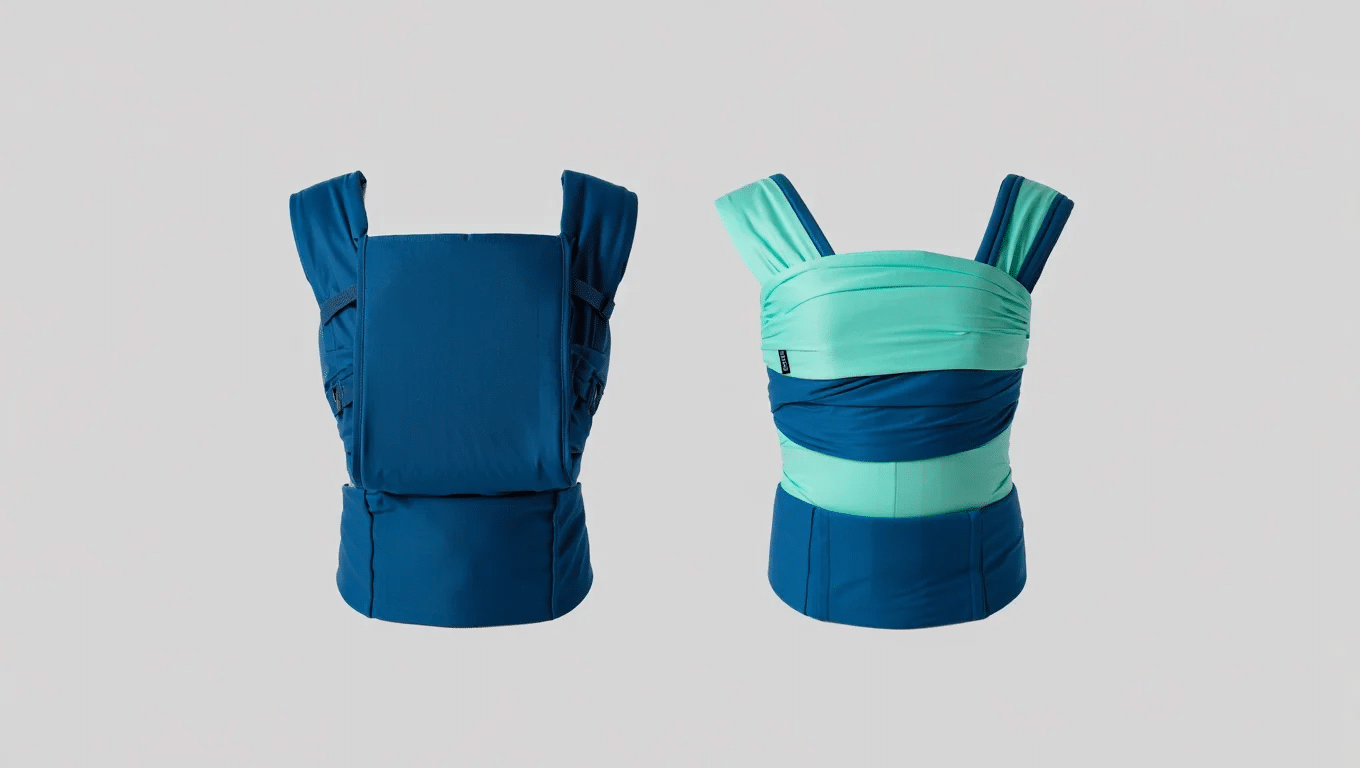
Mei-Tai carriers mix wraps and structured carriers. They have a panel for the baby with straps that tie around the parent.
Ideal for: Newborns to 3-year-old toddlers
Best use: All-day wear when you need to switch positions
They suit parents who want more than one carry option. The ties allow for a custom fit but need practice to use well.
Sling Carriers
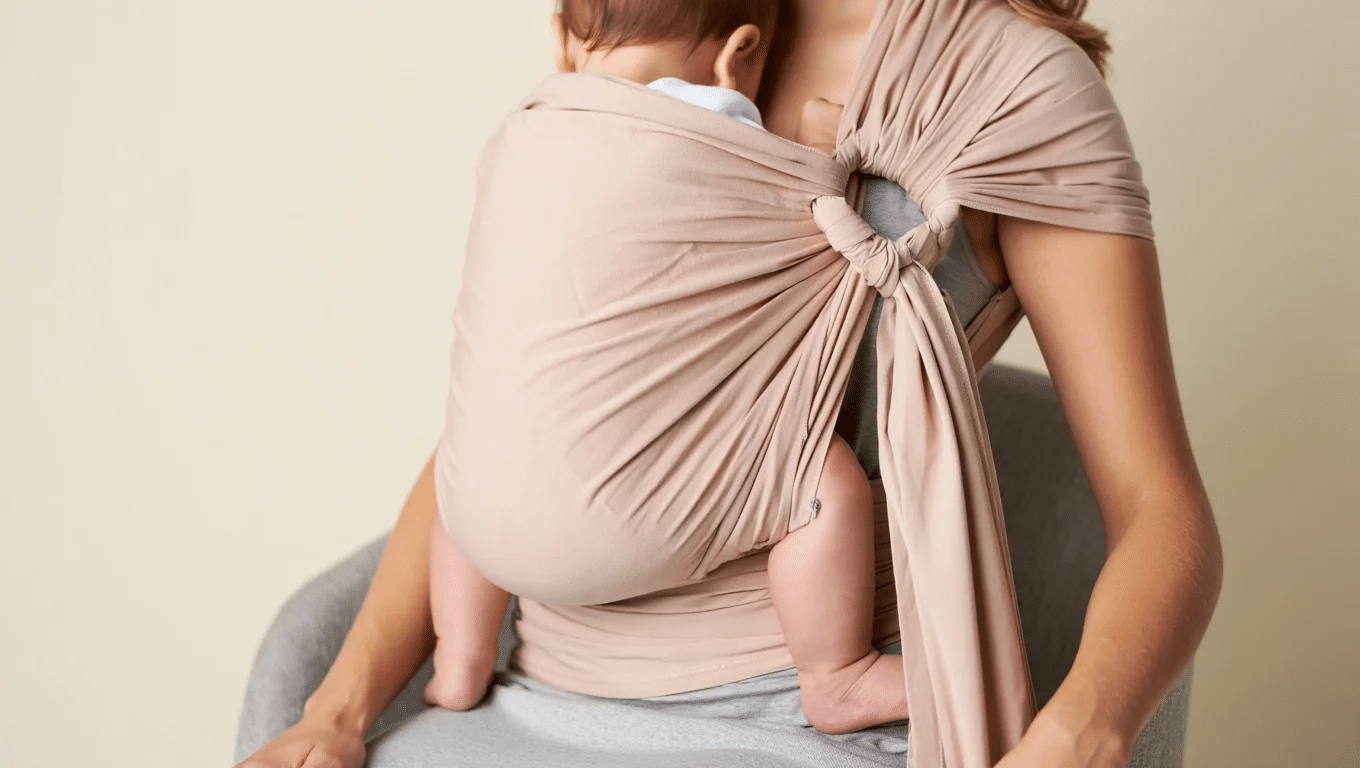
Slings are fabric loops worn over one shoulder and across the body. They create a pocket for the baby to sit in.
Ideal for: Babies from 8 to 33 pounds
Best use: Quick errands or nursing on the go
These carriers fit in diaper bags and go on fast. They work well for quick ups and downs but may cause shoulder strain during long wear.
Hip Seats
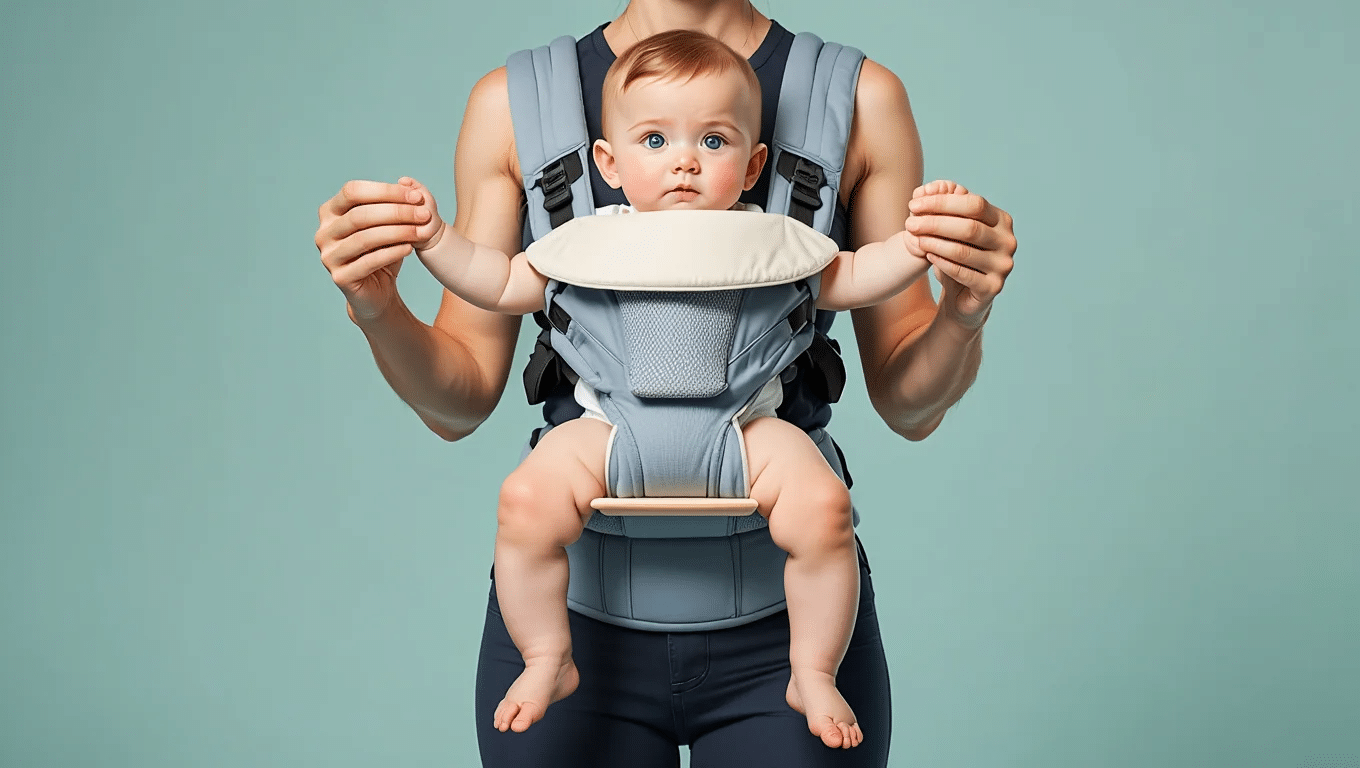
Hip seats include a small shelf that supports the baby’s bottom. The parent still uses their arms for support.
Ideal for: Babies from 4 months to about 33 pounds
Best use: Situations where you need to put the baby down often
They help reduce arm strain when holding babies. Parents find them useful for quick holds but not for true hands-free tasks.
Baby Carrier vs. Stroller: When and Why to Choose Each
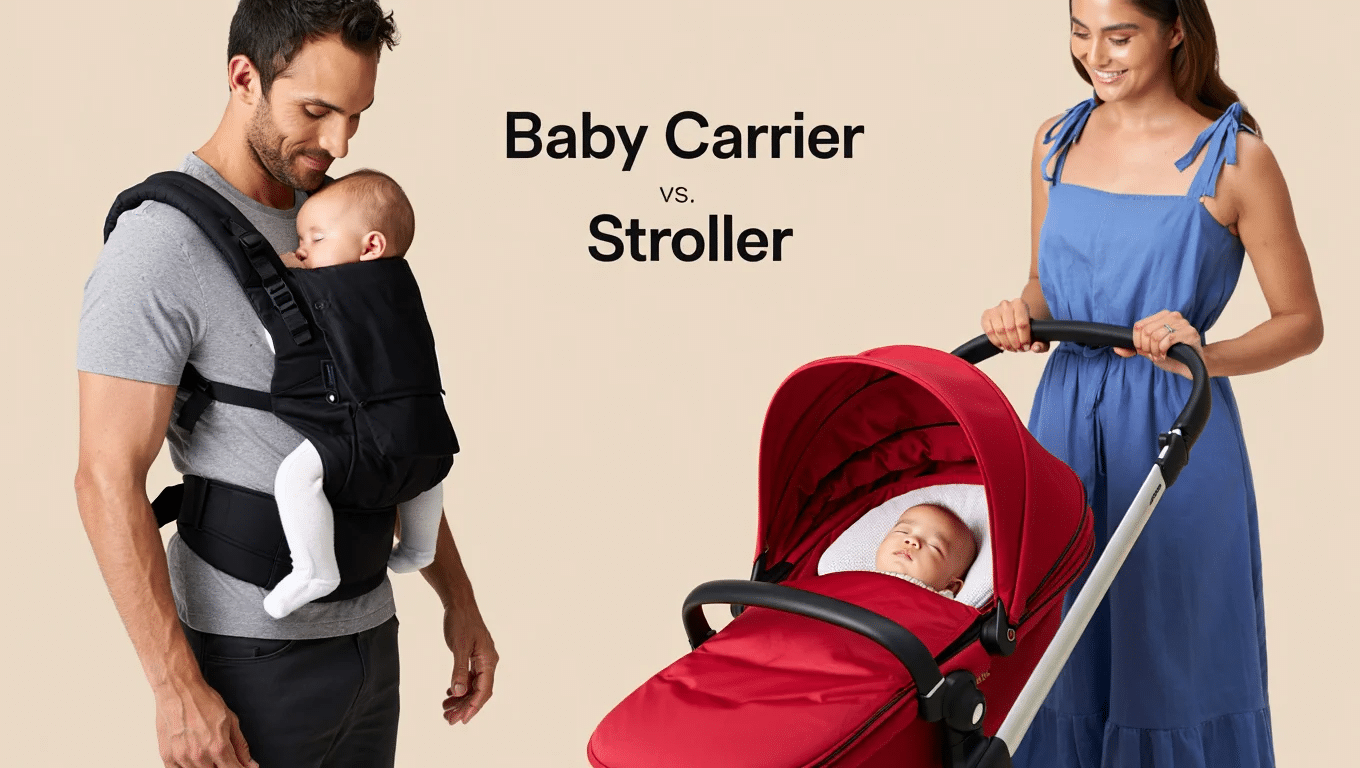
Parents often have to choose between grabbing their baby carrier or pushing a stroller. Both have their place in a family’s daily life, but they shine in different situations.
When Carriers Work Better
- Busy Places: Carriers win in crowded stores, busy markets, or packed sidewalks where strollers become hard to push.
- Travel: Going through airports? A carrier keeps hands free for luggage while keeping the baby secure during security checks.
- Rough Ground: Hiking trails, beach sand, and steps make strollers tough to use. Carriers let parents move freely on any surface.
- Bonding Time: Carriers keep babies close, which helps with bonding and may reduce crying. Babies feel safe hearing a parent’s heartbeat.
- Small Spaces: Tiny shops, public transit, or homes with tight doorways favor carriers over bulky strollers.
When Strollers Make Sense
- Long Outings: Strollers save parents’ backs and shoulders during all-day trips to zoos, parks, or malls.
- Nap Time: Many babies sleep well in strollers, which offer flat positions for proper rest.
- Storage Space: Shopping bags, diaper supplies, and extra clothes fit nicely in stroller baskets.
- Hot Weather: Strollers with canopies protect from the sun and heat better than carriers, which share body heat.
- Multiple Kids: Some strollers handle two or more children, while a carrier can only hold one.
Smart Ways to Use Both
Many parents find the perfect mix by bringing both on trips. They might start with a stroller and switch to a carrier when the baby gets fussy.
Smart parents keep a small carrier in the stroller basket just in case they need it.
Families often divide duties, with one parent pushing the stroller while the other carries the baby. The right choice depends on the day’s plans, the baby’s mood, and what feels most handy at the moment.
Which Baby Carrier is Right for You?
Several factors go into choosing the right baby carrier. Parents should consider their baby’s age, comfort, and how they plan to use it.
| Type | Ideal Age/Weight Range | Comfort Level | Ease of Use | Cost Range | Pros | Cons |
|---|---|---|---|---|---|---|
| Soft Structured Carriers | 7.5-33 lbs | High | Easy | $80-$200 | Good back support, quick to put on, works front or back | Bulky, doesn’t fold well for storage |
| Wrap Carriers | 8-35 lbs | Very High | Hard | $40-$80 | Custom fit, spreads weight well, feels close to the baby | Steep learning curve, takes time to put on |
| Sling Carriers | 8-33 lbs | Medium | Easy | $30-$70 | Quick to use, compact for storage, good for nursing | Can strain one shoulder, less secure for active babies |
| Mei-Tai Carriers | Birth to 3 years | High | Medium | $50-$120 | Works for many ages, allows multiple positions | Requires practice to tie correctly |
| Backpack Carriers | 6-36 months | Medium | Medium | $150-$300 | Great for outdoors, good storage options | Heavy, bulky, not for everyday use |
| Hip Seats | 4 months-33 lbs | Medium | Easy | $40-$80 | Reduces arm strain, easy to put the baby down | Not truly hands-free, less support than other types |
Safety First: How to Use Baby Carriers Correctly
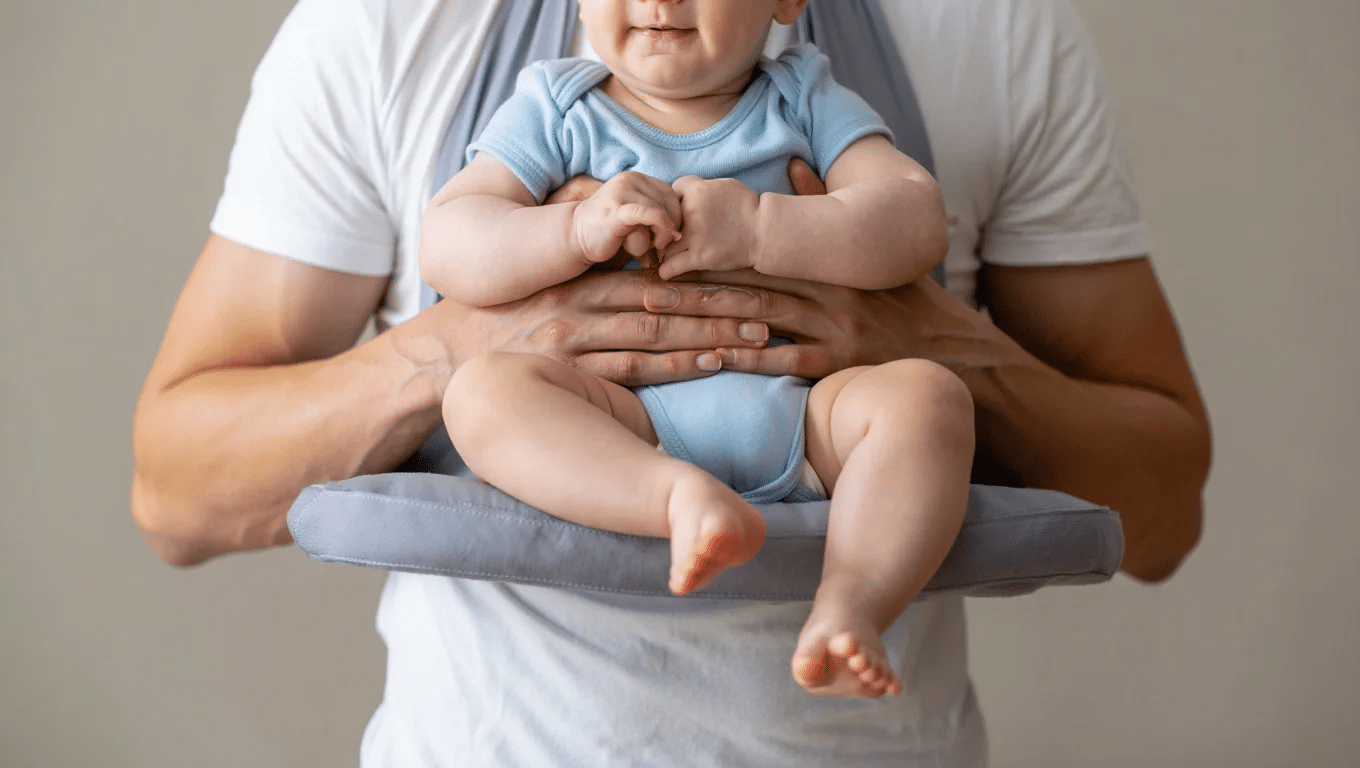
Parents must follow key safety rules when using any baby carrier. The T.I.C.K.S. rule helps ensure babies stay safe while being carried.
The T.I.C.K.S. Safety Rule
- Tight: Keep the carrier snug with no more than two fingers between the baby and the fabric.
- In view: Always keep the baby’s face visible and never covered by fabric.
- Close enough to kiss: Position the baby high enough to easily kiss their head.
- Keep chin off chest: Maintain at least a finger’s width space under baby’s chin.
- Supported back: Ensure the carrier maintains the baby’s natural back curve.
Common Mistakes to Fix
- Placing the baby too low near the belly button instead of high on the chest.
- Turning the baby to face outward before they have proper head control (4-6 months).
- Allowing the baby’s legs to dangle straight down instead of in a supported “M” shape.
- Using a carrier with straps too loose, causing the baby to slide or slump.
- Putting heavy winter coats under carriers creates unsafe gaps.
Final Thoughts
The world of baby carriers offers something for every family and lifestyle.
Each type of baby carrier offers its own benefits. Wraps offer the skin-to-skin bonding babies crave. Structured carriers give parents the freedom to tackle daily tasks. Slings make quick trips simple.
Parents should trust their instincts. The best carrier feels good to them and keeps their baby happy.
By watching how their little one responds to different types of baby carriers, they’ll know when they’ve found the perfect fit.


